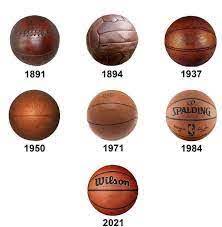Basketball, a dynamic sport characterized by fast-paced action and high-flying plays, has come a long way from its humble beginnings. The evolution of basketball reflects not only changes in rules and playing styles but also the sport’s enduring impact on culture, athleticism, and global recognition. This article traces the fascinating journey of basketball’s evolution, highlighting key milestones that have shaped the game into what it is today.
Origins: Invention and Adaptation
Basketball was invented in 1891 by Dr. James Naismith, a Canadian physical education instructor. Originally designed as an indoor activity to keep athletes active during the winter, the early version of the game involved a soccer ball and peach baskets as goals. Over time, the game evolved as players and coaches adapted rules, introducing elements like dribbling and the elimination of the jump ball after each basket.
Rules and Structure Refinements
In its early years, basketball underwent several rule changes to enhance its flow and excitement. The introduction of the dribbling rule in 1901, the development of a backboard to prevent spectators from interfering with shots, and the implementation of the three-second rule in the paint all contributed to shaping the modern version of the game.
Professionalization and the NBA
The National Basketball Association (NBA) was founded in 1946, marking a significant step in basketball’s evolution. The NBA brought together top talents, fostering the rise of iconic players like Bill Russell, Wilt Chamberlain, and Jerry West. The league’s global reach and marketing efforts propelled basketball into the international spotlight.
Innovations and High-Flying Action
The 1970s and 1980s witnessed innovations that transformed basketball into a spectacle. The introduction of the shot clock in 1954 forced teams to play at a faster pace, leading to higher-scoring games and more dynamic plays. Dunking, once prohibited, became a highlight-reel move synonymous with the sport’s excitement.
Globalization and Cultural Impact
The 1992 Olympics marked a turning point in basketball’s globalization. The “Dream Team,” composed of NBA superstars like Michael Jordan, Magic Johnson, and Larry Bird, showcased the sport’s appeal on the world stage. International players like Dirk Nowitzki, Yao Ming, and Manu Ginóbili further diversified the NBA and increased the sport’s global popularity.
Modern Era and Athleticism
The 21st century has seen basketball evolve further into a showcase of athleticism and versatility. Players like LeBron James, Stephen Curry, and Kevin Durant have redefined traditional positions and brought new dimensions to the game. Advances in sports science, analytics, and technology have also shaped player development, training methods, and strategic approaches.
Inclusivity and Social Impact
Basketball’s evolution extends beyond the court, addressing social issues and advocating for equality. Players have used their platform to raise awareness about racial injustice, education, and community development. The sport’s power to bring people together and spark conversations underscores its significance beyond the game itself.
Conclusion
From its modest beginnings to its current global status, basketball’s evolution is a testament to the sport’s adaptability, excitement, and cultural resonance. As the game continues to evolve, embracing new playing styles, technologies, and global influences, its core values of teamwork, passion, and competition remain constants that resonate with players and fans alike.



















Add Comment